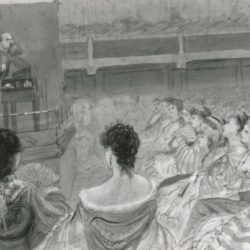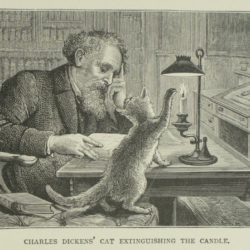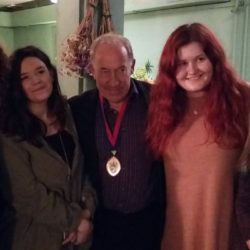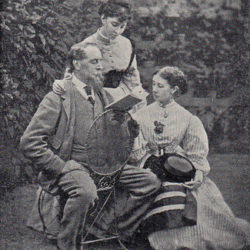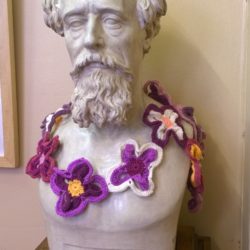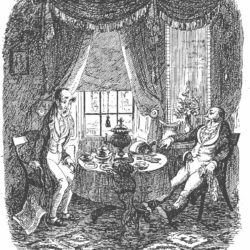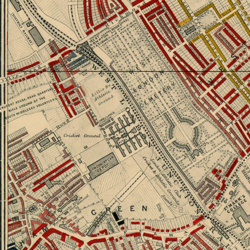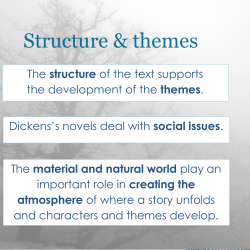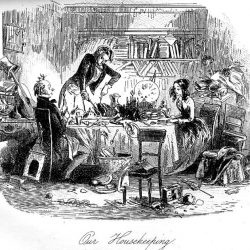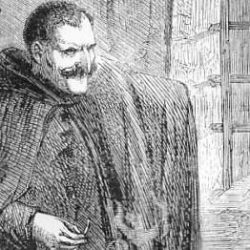In this post, Dr Caroline Radcliffe (University of Birmingham), discusses the dramatic quality of Dickens’s writing. She reflects on Dickens’s own dramatised reading, Sikes and Nancy, adapted from Oliver Twist, of which she directed a performance at the BMI in 2017 as part of the CLiC Dickens Day. This is a post of the BMI … Continue reading “Sikes and Nancy: Dickens and audience”
Tag: Dickens
“Mew says the cat…Bow-wow-wow says the dog”: Which animal did Dickens prefer?
In this post for the “BMI lockdown life” series, Lydia Craig (@lydiaecraig on Twitter) of the Loyola University Chicago delights us with more insights about Charles Dickens, the 16th president of the BMI. Lydia is co-organizer of the upcoming #Dickens150 virtual conference on 9 June. If you want to join this day of virtual talks … Continue reading ““Mew says the cat…Bow-wow-wow says the dog”: Which animal did Dickens prefer?”
Hard Times at the BMI
In this post, Dr Serena Trowbridge (Birmingham City University), Senior Vice-President of the Birmingham & Midland Institute, discusses Dickens’ role in supporting the B&MI as an educational institution in its early days. By drawing on Dickens’ views on education in his novel Hard Times, this post is a perfect sequel to Dr Pete Orford’s post … Continue reading “Hard Times at the BMI”
Bitesize Boz: Reading Dickens in instalments online
Following the opening post by Samina Ansari, Dr Pete Orford (@DrPeteOrford on Twitter) of the University of Buckingham starts off our series of guest posts – ‘BMI lockdown life’ – that we guest-edit for the BMI blog. (The posts are published on both blogs). Pete is the Course Director for the MA by Research in … Continue reading “Bitesize Boz: Reading Dickens in instalments online”
How the BMI gave Charles Dickens a new career
This post by Samina Ansari, Junior Vice President of the Birmingham & Midland Institute (BMI), kicks off our new ‘BMI lockdown life’ series of guest posts. This series is a collaboration with the BMI blog, where the posts are published simultaneously. Samina highlights the historical importance of the BMI as a cultural hub and its … Continue reading “How the BMI gave Charles Dickens a new career”
Dickens makes the impossible possible: Charles Dickens, Reporter?
In this guest post, Miriam Helmers (University College London) draws on how different digital tools and sources to examine the relationship between Dickens’s journalism and his fiction. She reports very interesting insights into the writer’s use of “a fantastic kind of descriptive language”. Charles Dickens was a reporter before he was a writer of fiction. … Continue reading “Dickens makes the impossible possible: Charles Dickens, Reporter?”
Good Neighbours, Good Friends? Navigating Neighbourhoods, Communities and Connection in Dickens
In this post, Dr Emily Bell (Loughborough University) explains how she has used CLiC to explore the theme of neighbourhoods in Dickens’s works. Emily is also an editor of the Dickens Letters Project and has recently been appointed as a fellow of the Software Sustainability Institute (SSI) – we look forward to learning more about … Continue reading “Good Neighbours, Good Friends? Navigating Neighbourhoods, Communities and Connection in Dickens”
Finding links between the structure and themes of A Christmas Carol
A Christmas Carol is a popular text choice for students in GCSE English Literature Section B (see the AQA Lead Examiner’s Report 2017). No wonder then, that it is also one of the top texts in our CLiC 2.0 web app for which teachers request activities. In fact, two teachers have previously written guest blog … Continue reading “Finding links between the structure and themes of A Christmas Carol”
Liminality in David Copperfield
In this guest post, Sophie Phelps explores ‘liminal’ Dickensian characters who are not quite children and not quite adults, as she shows with a case study of David Copperfield’s “child-wife” Dora. We think this topic is a fantastic fit for us: questions of characterisation in Dickens’s writing are very dear to the CLiC project. Childhood is … Continue reading “Liminality in David Copperfield”
Finding the biting point: Desire and biting males in Dickens’s ‘The Pickwick Papers’ and ‘The Old Curiosity Shop’
In this guest post, Colette Ramuz (Royal Holloway) explores textual patterns related to the mouth in a subsection of the CLiC corpus of Dickens’s Novels. She argues that the use of digital tools can help advance our understanding of Dickens’s representations of embodiment and sexuality. It is a commonplace that sexuality was considered a taboo topic … Continue reading “Finding the biting point: Desire and biting males in Dickens’s ‘The Pickwick Papers’ and ‘The Old Curiosity Shop’”

